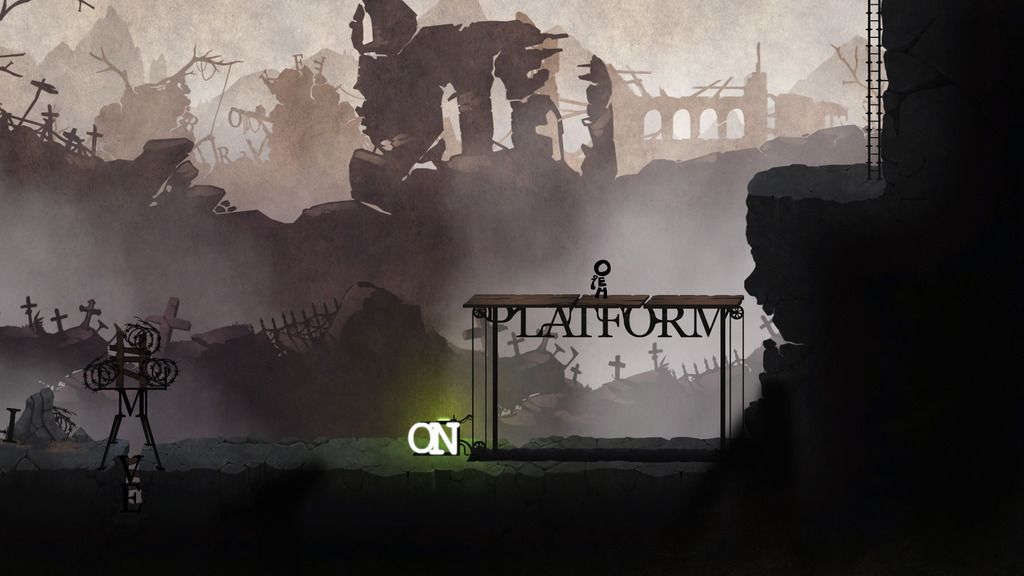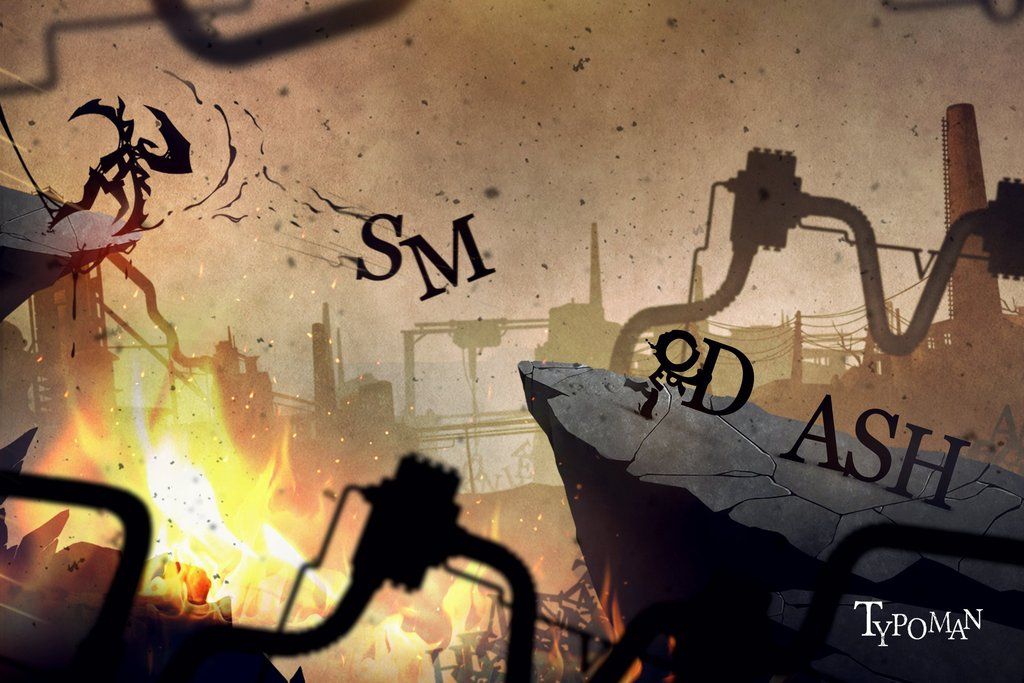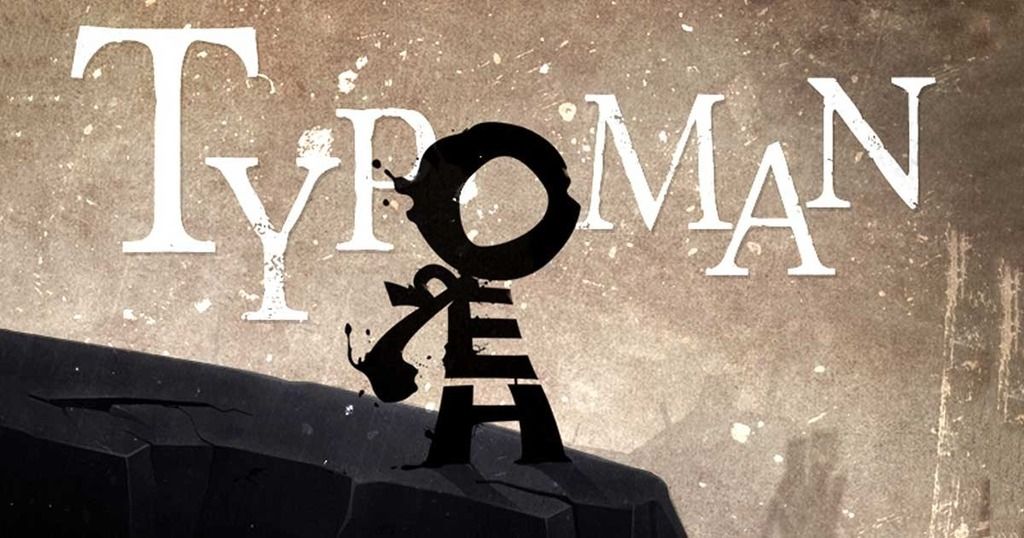- Format: Wii U
- Unleashed: Out Now
- Publisher: Headup Games
- Developer: Brainseed Factory
- Players: 1
- Site: http://www.typoman.net/
- Game code provided by the publisher
Let’s all sing it together – you know the words! Typoman, Typoman. Does whatever a typo can. And he really can, you know. In mood, aesthetic and design, it’s very similar to something like Braid or – especially – Limbo. Make no mistake though; you’ve never played anything quite like this before.
If you insist on pigeonholing your games, then create a whole new genre for this. It’s pretty much a platform puzzler, but it might be more accurate to say it’s what would happen if a videogame got jiggy with one of those puzzle magazines aimed at middle aged women. The resultant mutant child would be Typoman, a platformer where all the characters (with one exception) are words formed into the shape of people or monsters. You are HERO, and the nasties out to get you are the likes of HATE, FEAR and DOOM twisted into monstrous, ambulatory forms. You can defend yourself, but you have no sword, gun, rocket launcher or even a bit of wood with a nail through it. Words are your weapons, your shields, and your puzzle solvers.
Much of this game’s enjoyment comes from discovering the staggeringly intelligent and imaginative ways that English words have been played around with in a way that fits so snugly into gameplay. It is for this reason that we’re reluctant to reveal any more of the wordplay than we absolutely have to. As already shown by the Nindies @ Home demo earlier this year and the trailer last week, letters and words in the environment serve multiple functions. They’re interactive and non-patronising tutorials; warnings; hints; and, when you create a word yourself, often influencers on your surroundings.

Positive words such as HOPE, LIFE and FAITH can help and protect you; and, after a point, LIE even proves to be unexpectedly useful. Like any moody indie darling, Typoman seems to be analogous to something. So far as we can tell, that ‘something’ is a relationship. It’s never made explicitly clear. While there’s nothing wrong with asking the player to search for meaning themselves, the frustrating thing is that you’re never going to see all the clues to the ‘real’ story without constantly accepting hints for puzzles.
The hint system is something of a poisoned chalice. Functionally, it’s basically perfect. If you’re stumped on an anagram, or what word hidden within a longer one you need, you just tap the question mark on your GamePad for a theoretically unrelated paragraph which contains the answer. This ensures that you never get stuck anywhere unless you choose to. As previously mentioned though, determining to work things out yourself means that you’ll miss out on a lot of these snippets of text which tell an abstract story.
All this talk of anagrams may have you worried if you’ve watched gameplay. HERO can drag, lift, and throw individual letters. Isn’t this going to make anagrams a chore, especially the ones which involve more letters than you actually need? Well actually – nope. If you wish to speed things up, just get close to the group of letters you want to move around, hit X, and use the touchscreen to quickly move letters round by hand (or, rather, finger). This also lets you discard unwanted letters as easily as if you were tossing wounded kittens into the river (and with a similar flicking motion).

Sometimes – just sometimes – the word that you need is just a little too obtuse. And no, ‘obtuse’ isn’t one of the words. It makes sense once the answer is revealed, but it does suggest that the thought processes of the developer won’t always align with those of the player. Also, on the rare occasions that Typoman tries to act like a regular action platformer, the design and controls can’t quite keep up. This is most glaringly obvious during the final encounter, where nothing short of a miracle will see you complete it in one run without resorting to trial and error.
It’s still a great-looking, highly intelligent, unique, and thoroughly enjoyable game. The main concern is one of longevity. The whole thing will be over in somewhere around two and a half hours and, with (so far as we can tell) only one solution to each puzzle – and an entirely linear path – reasons to play through a second time come in at about zero. You won’t regret a single second that you‘ve spent with Typoman, though; and we hope for – nay, demand – a sequel.




Comments